Paleontology

Fossil "swim tracks," a type of vertebrate trace fossil gaining recognition in the field of paleontology, is made by various tetrapods (four-footed land-living vertebrates) as they traveled through water under buoyant or semibuoyant conditions.
They occur in high numbers in deposits from the Early Triassic, between the Permian and Jurassic 250 to 200 million years ago. Major extinction events mark the start and end of the Triassic but it is a but of a mystery why tracks from the period are so abundant and well preserved.
Tracy J. Thomson next to a block with numerous…

The origin of curious ring-like structures that formed half a billion years ago on a seabed in Wisconsin is an ancient unsolved riddle and academics would like you to help them figure it out.
It makes sense, since it was citizen scientist paleontologists that discovered the almost perfectly circular rings some 30 years ago.
Nigel Hughes, a professor of paleobiology in the Department of Earth Sciences at the University of California, Riverside, wants to know if they are the result of a physical process or the activity of an ancient organism - and a cool $500 is in it if you do what…

Paleontologists have discovered a new species of a long-necked dinosaur.
Qijianglong (pronounced "CHI-jyang-lon") was about 45 feet long and lived about 160 million years ago in the Late Jurassic. The name means "dragon of Qijiang," for its discovery near Qijiang City, close to Chongqing, and the fossil site was found by construction workers in 2006. The dig eventually came upon a series of large neck vertebrae stretched out in the ground - with the head of the dinosaur was still attached.
"It is rare to find a head and neck of a long-necked dinosaur together because the head is so…
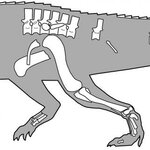
A new species of dinosaur has turned out not to be a dinosaur at all, it is instead one of the large reptiles that lived before dinosaurs took over the world. But like many dinosaurs, it looked fearsome.
Nundasuchus songeaensis was a 9-foot-long carnivorous reptile with steak knife-like teeth, bony plates on the back, and legs that lie under the body.
The basic meaning of Nundasuchus, is "predator crocodile," "Nunda" meaning predator in Swahili, and "suchus" a reference to a crocodile in Greek.
Nundasuchus songeaensis, a 9-foot-long carnivorous reptile with steak knife-…
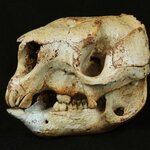
Scientists have extracted DNA from mysterious marsupial megafauna that roamed Australia over 40,000 years ago - Australia's extinct giant kangaroos.
The team extracted DNA sequences from two species: a giant short-faced kangaroo (Simosthenurus occidentalis) and a giant wallaby (Protemnodon anak). These specimens died around 45,000 years ago and their remains were discovered in a cold and dry cave in Tasmania.
Relatively good preservation conditions in the cave allowed enough short pieces of DNA to survive so researchers could reconstruct partial "mitochondrial genomes" - genetic…
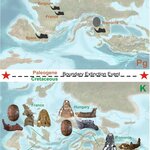
Dinosaurs once flourished in Europe but when an asteroid hit 66 million years ago, they died quickly, according to a new study.
That an asteroid killed off the dinosaurs is widely held, but until recently dinosaur fossils from the late Cretaceous, the final period of dinosaur evolution, were almost exclusively found in North America. This raised questions about whether the sudden decline of dinosaurs in the American and Canadian west was merely a local story.
The new study synthesizes research on European dinosaurs over the past two decades. Fossils of late Cretaceous dinosaurs are now…

Dearcmhara shawcrossi, Scottish dino-fish. Todd Marshall
By Stephen Brusatte, University of Edinburgh
Today my colleagues and I had the great privilege to announce a remarkable new discovery: a dolphin-like reptile that prowled the Middle Jurassic waters 170 million years ago.
When you think of scientists digging up prehistoric reptiles like this, odds are a certain image comes to mind. An intrepid Indiana Jones character, fedora perched at just the right angle to block out the desert sun, brushing sand off of a perfect series of bones emerging from the ground, maybe in the western US, or the…

Reconstructing ancient life has long required a certain amount of inference and imagination - especially speculative is the coloration of long-extinct organisms.
New methods of investigation are being incorporated into paleontology that may shed light (and color) on fossils.
Research presented at the recent Society of Vertebrate Paleontology meeting shows the importance of using new imaging technologies in reconstructing the color of Archaeopteryx, one of the most famous and important fossils species. Ryan Carney of Brown University incorporated scanning electron microscopy in a 2012 study…
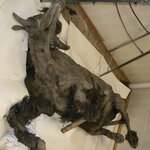
Many large mammals went extinct at the end of the most recent Ice Age (about 11,000 years ago), including the Steppe bison, Bison priscus.
Recently an intact one was found, literally frozen in time. This most complete frozen mummy of the Steppe bison yet discovered dates to 9,300 years ago and was uncovered in the Yana-Indigirka Lowland.
The Yukagir bison mummy, as it is named, has a complete brain, heart, blood vessels and digestive system, although some organs have shrunk significantly over time. The necropsy of this unique mummy showed a relatively normal anatomy with no…
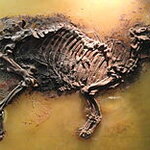
A fossil of the ancient horse Eurohippus messelensis found in Germany contains a fetus as well as parts of the uterus and associated tissues.
Eurohippus messelensis had four toes on each forefoot and three toes on each the hind foot, and it was about the size of a modern fox terrier. Though different in size and structure, reproduction in early horses was very similar to that of modern horses. The new find was unveiled at the 2014 Annual Meeting of the Society of Vertebrate Paleontology in Berlin.
"Almost all of the bones of the fetus are still articulated in their original position. Only…